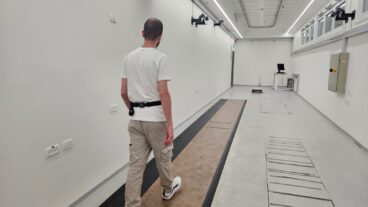In development for the past five years, the HMDS will be a standard component for all F-35 Joint Strike Fighter aircraft.Fighter pilots have a lot to pay attention to. In addition to their targets ahead, they have to focus on an array of complicated flight instruments. Traditionally, this has meant occasional glances away from the destination or target, which can lead to potential distractions when every moment counts.
But thanks to new Israeli-developed helmet technology that incorporates and displays all vital flight data, pilots can keep their eyes where they should be – on their targets.
Utilizing a ‘virtual heads-up display’, the Helmet Mounted Display System (HMDS) developed by Israel’s Elbit Systems and its US subsidiary Vision Systems International (VSI ), enables the pilot to look straight at a target, instead of diverting his or her view on a myriad of screens. All the vital data is displayed on the visor of the helmet. The HMDS will also provide flight gear, including the oxygen mask and protection against chemical and biological hazards.
Based on technology originally developed for Israel’s Lavi planes during the 1980s, the HMDS allows the combat pilot to aim the weapon systems at a spot on the horizon. The weaponry will be automatically aimed wherever the pilot directs his view.
In development for the past five years, the HMDS will be a standard component for all F-35 Joint Strike Fighter aircraft. A multi-national team, including Israel as a security cooperative participant, is developing the Lockheed Martin-produced F-35, which will be the most advanced multi-role fighter in flight.
The plane is expected to play a major role in the US army, navy, and air force operations once it’s operational in 2011. Earlier this month, the HMDS was successfully used for the first time on an F-35.
The F-35 project was developed to replace several different aircraft from the US Army and Airforce and the British military. The world’s first multi-role stealth fighter, it aims to build a multi-use versatile and affordable aircraft.
“We are proud to be a key partner to the F-35 industrial and government team,” said VSI President Drew Brugal.
Elbit’s HMDS utilizes the most advanced features only available in the F-35. The pilot is more aware and has more tactical capability in missions due to the capability of the helmet to track the exact position of the pilot’s head. It also provides to the pilot video with imagery during the day and at night.
Thanks to the HMDS virtual display, the F-35 is the first fighter jet in fifty years to not include a heads-up display (HUD), which according to military analysts give the plane a major advantage.
“Since the F-35 has no HUD, providing virtual HUD capability has become a mandatory requirement, entailing precise head tracking and display operation near zero latency,” noted Brugal.
Lockheed Martin has placed a $156 million order for the helmet to all of the F-35’s customers.












